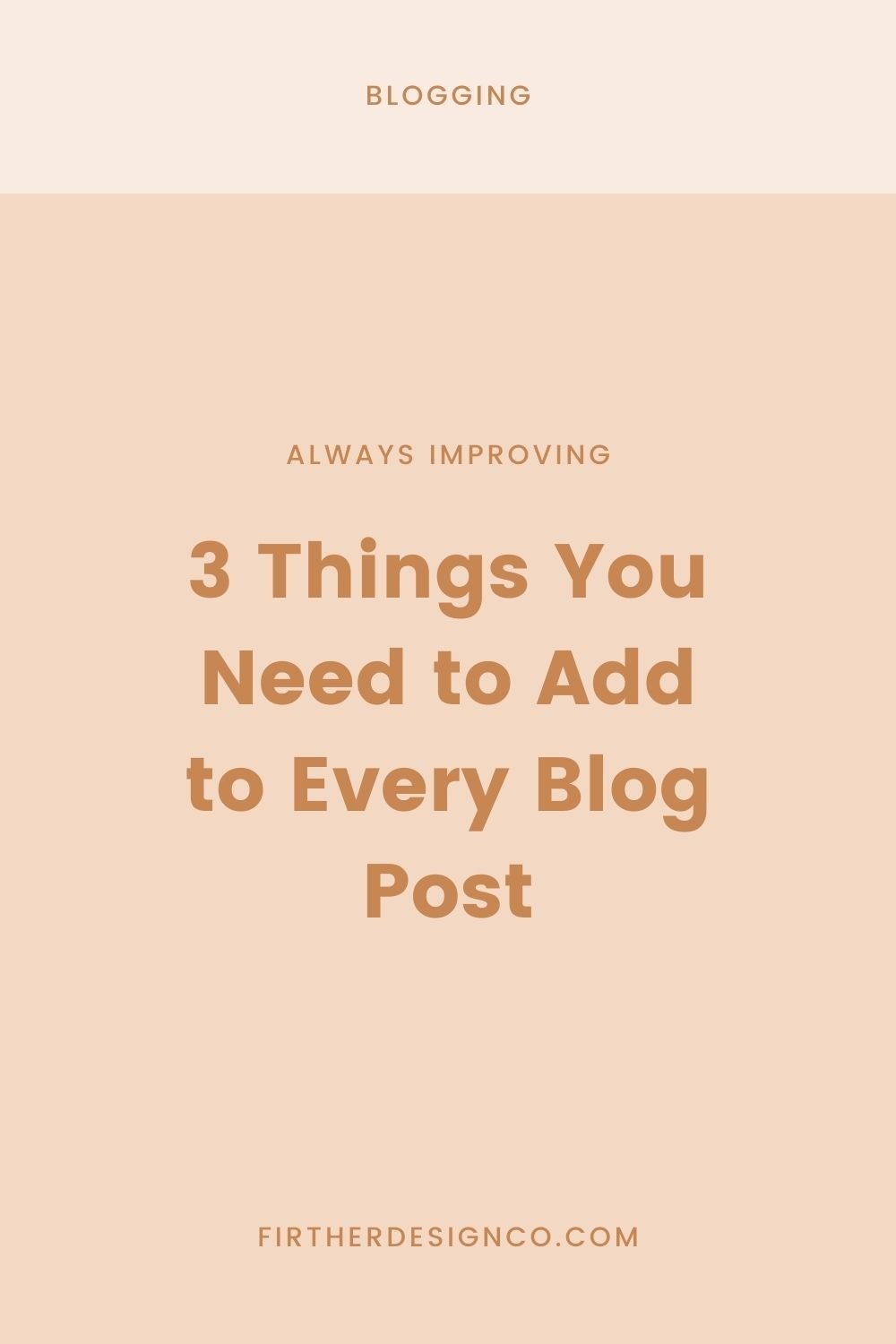3 Things You Need to Add to Every Blog Post
So, you’ve got a great idea for a blog post. Now the magic really begins. Blog posts are a great way to promote thought leadership and generate links. You can enhance them even further by powering up your approach to writing posts and making them more hardworking for your audience: think encouraging more pinning, making it faster for readers to find answers, and more. This post is for anyone who writes a blog for their online business or side hustle!
A hardworking intro paragraph
You know when you Google something and the results page is a bunch of links with descriptions under them? The snippets under the link are SEO excerpts and a great way to make sure you’re reaching your desired audience.
So where does this snippet come from? You can input it yourself whether you’re using WordPress or Squarespace depending on what SEO tool you’re using. Luckily Squarespace has it built right in under a post’s settings so you don’t have to look far!
The nice thing is that you can save time by keeping SEO in mind when writing your first paragraph and reuse that in the SEo excerpt section. Based on guidelines from Yoast and Hubspot, I recommend that every blog post has an intro that follows the following puzzle pieces.
Introduce the topic
What will you cover in the post?
Who is the target audience?
Lure people in
Grab the reader’s attention. Why is this information necessary to know?
If possible, a statistic backing up that claim.
Set expectations
How will what you’re saying help the problem?
As you’re working these in, be sure to use your primary keyword for maximum SEO benefit.
Adding a lead magnet or social media at the end of each post
In the Midwest there’s this classic joke about the Midwestern goodbye, which involves standing at the door with your coat on and your hand on the door handle but not being able to leave because nobody can wrap up the conversation. Something about leaving abruptly feels a bit too brash for us Midwesterners!
Anyways, that’s how I always felt at the end of a blog post. I’ve provided all the info, shared the story, and now….I just leave? I was never able to figure out how to wrap up the post at the end while still infusing personality.
Cut to reading a few other blogs and being hit by this big idea: what if I don’t have to write some unique conclusion at the end of each post? Why not be more strategic and use it as an opportunity to further connect with the reader.
Now if this sounds obvious to you, it also did to me. But I find there are so many moving parts in maintaining a blog that sometimes little things like this fall to the bottom of the priority list.
Here’s how you can implement this idea into your blog
At the time of writing this post, I’m currently using the bottom of my posts for Pinterest. I insert 1-2 pinnable images with the blog post name, a header that says “if you liked this post, share it,” and a short snippet related to the header.
Add anchor links to the top of a post if it’s really long
Consider how you read and absorb content online. Odds are, you aren’t reading everything in dept and instead opt to skim the page. Studies show that readers skim over as much as 80% of the content they read online!
The good news? Even if someone is skimming, you can take steps to meet them where they’re at, solve their problem, and show that you’re a trustworthy source for content.
To achieve this on my site, I like to use a combination of tools to enhance skimmability. I use prominent headers, take care to write shorter paragraphs, and use anchor links.
What are anchor links? They’re links at the top of an article that allow the user to hop right to the section they’re looking for. They are a great way to quickly help someone find the answers they’re looking for. The method of adding anchor links will vary depending on what platform you use, but if you’re on Squarespace you’ll likely find this article helpful.
If you liked this post, save it for later!
I hope this post helped you add a purposeful punch to your blog posts. If you liked this article, save it for later by pinning one of the images below. I can’t wait to see what you create!


